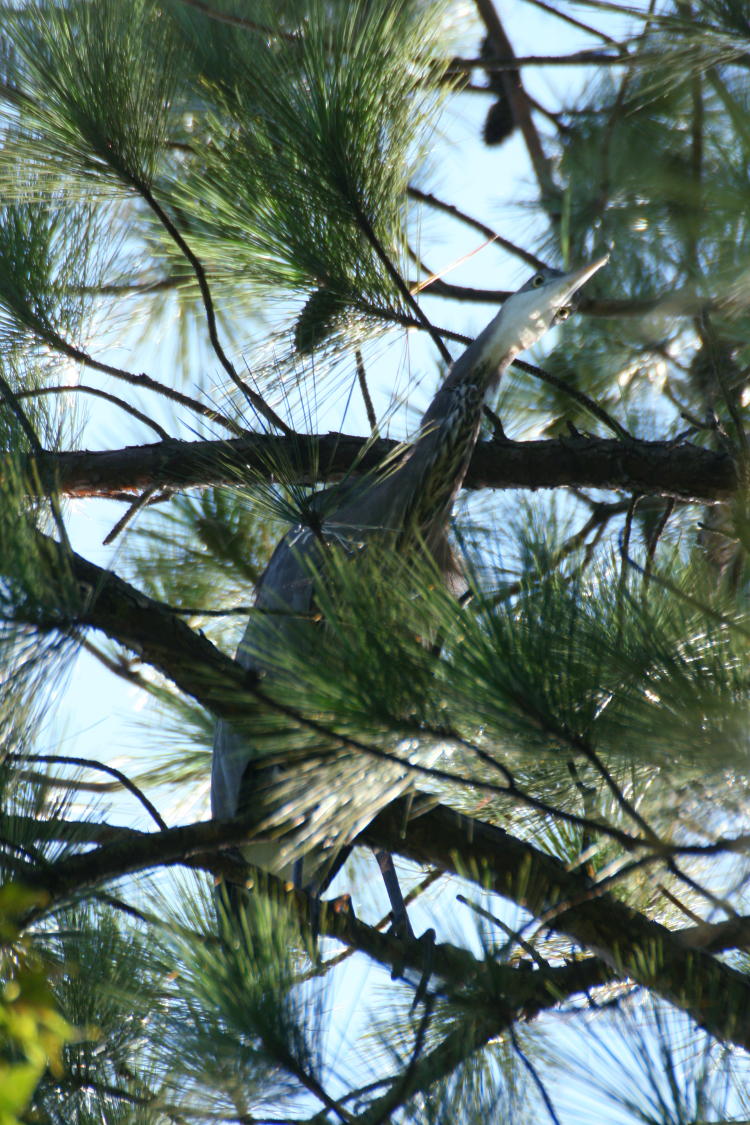
A few days back, the Missing Mr Bugg had finally finished with all his summer chores and we had another outing, the first since early May; it was moderately productive but not as much as either of us would have liked. Nonetheless, we both have a selection of useful photos, and I gave him plenty of time to rectify the horrible neglect he’s been showing his blog, but as of this writing he still hasn’t posted anything, so I guess it’s up to me. Yet again.
More will be coming, but I had to post this one just for the expression and odd angle. While we watched, a territorial dispute between two great blue herons (Ardea herodias) resulted in one cruising across the lake and alighting in a tree almost directly over our heads. I had lost sight of it among the branches just as it touched down, but knew it had to be within a very small area, not to mention that it was gurking softly to itself as we quietly shifted back and forth beneath it trying for a glimpse – and it still took two minutes to spot the bulky bird. It wasn’t as horrified by our presence as it appears here, spending time looking out over the water and carefully watching an unleashed (of course) dog that was shambling through the immediate vicinity. The owner none-too-quietly informed us of the number of birds that could be seen in the area, blissfully unaware of us both pointing long lenses into the tree canopy directly overhead and speaking in hushed tones. There’s a reason that I don’t like popular parks…
By the way, this is a good example of why you should know how to shut off autofocus quickly and without looking at the switch. In such conditions, the camera is likely to lock onto anything except the eyes of the bird, which is the primary point of attention for the image, and you’ll need to get focus back where it belongs quickly. Meanwhile, this shows the useful eye-alignment of herons (and many other waders,) able to see straight down under its chin – its beak is aimed slightly downwards here, but far from directly towards us. For birds like the American bittern, this placement allows the bird to view its entire surroundings while its beak is pointed straight up in camouflage mode, making it appear like water reeds – plus it permits watching the ground underneath its perch for predators, and probably even assists in spotting food in the very water the bird is wading within. This probably means that thousands of years in the future, nature photographers will have big protruding eyes that allow them to see all of the potential subjects that might be around them.*
* Assuming, of course, that nature photographers gain preferential mating privileges through their activities, which is a highly debatable factor…




















































